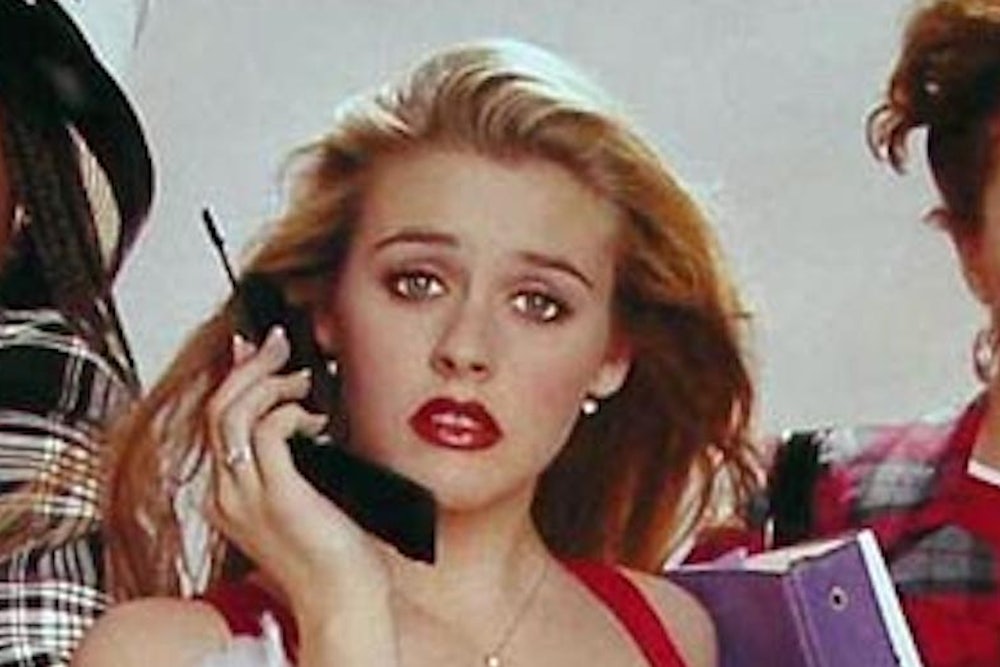If you are under the age of 45, chances are that at some point somebody over the age of 45 has condemned your alleged overuse of the word “like.” This person may or may not have said it politely. He or she may have been motivated by an altruistic desire to make you look respectable to others, a self-interested impulse to stop you from irritating them, or something in between. Either way, how we use “like” is one of the most gaping generational divides this side of those who ask, “Did you get my email?” (Of course we got your email—it’s an email, and you sent it!—we’ve just been busy.)
But a new essay by someone who is both a linguistics expert and, at least as importantly, over 45 suggests that “like” ought not to be maligned. “I had hit upon the answer to a question that had been puzzling me for years,” writes Allan Metcalf, an English professor at MacMurray College and—wait for it—executive secretary of the American Dialect Society. “Why is it that so many of us nowadays say ‘like’ (preceded by a form of ‘be’) to introduce something somebody said or thought?” (By “a form of ‘be,’” Metcalf means various conjugations of the verb “to be”: is, was, are, etcetera.)
The answer, according to linguistical science, is this:
This use of “like” allows us to introduce not just what we said or thought, but how. Instead of merely saying words, “like” with “be” allows us to enact the scene. And that, I think, is because it’s an extension of a longstanding use of “like” to indicate manner: March came in like a lion, He raged like a madman.
For example, I could be telling a story, and say, “I had a lot to do today. But my editor was like, we really need you to write a blog post. So I was like, okay, I’ll find something to write about.” Note that the “be” verb, in this case “was,” + “like” translates to a more dramatic version of “said,” perhaps expressing my feeling of being put-upon by my editor.
Having explained this usage of “like,” Metcalf goes on to be like: it’s totally okay! “I finally understand the difference between plain ‘I said I would’ and ‘I was like, I would!’” he concludes. “And now I understand why we need the latter for the moments when we need to show as well as tell.”
But is Metcalf right? Here I have to put on my fogey hat—not to mention be a pretty big hypocrite, for I am a prolific deployer of the Metcalfian “like”—and be like, no, we still use “like” too much.
For one thing, we don’t always use “like” with such high-minded intentions. Take the example Metcalf offers, perhaps the ur-moment of “like,” Frank Zappa’s 1982 hit “Valley Girl”:
So like I go into this like salon place, y’know
And I wanted like to get my toenails done
And the lady like goes, oh my god, your toenails
Are like so grody
It was like really embarrassing
She’s like oh my god, like bag those toenails
I’m like sure
She goes, I don’t know if I can handle this, y’know.
I was like really embarrassed.
This is a hyperbolic but accurate depiction of the way “like” is used by my cohort (and several other cohorts, too). In some place, it is Metcalfian: “She’s like oh my god,” means, “She said, ‘oh my god,’” and there is maybe some coloring of the way in which she said it. But consider just the next clause: “like bag those toenails.” The “like” is expressing something, but it is a third, still-vaguer sentiment—probably hesitance on the part of the speaker even to bring it up. (Such hesitance would be understandable: I mean, like, bag those toenails!)
But if “like” in the non-dictionary sense is best for conveying tone, well, then we’ve really run into the basic contradiction behind it: It is a word only used in verbal speech that gets across the very thing verbal speech is best at getting across without extra words. The quotation above, after all, comes from a song and is mimicking the way Valley Girls talked. When it is written, such as in David Foster Wallace’s writing, it is precisely to express the kind of vernacular that crops up when people converse face-to-face rather than via writing. And this goes both for that tertiary form of “like”—“like bag those toenails”—and even the Metcalfian “like,” in which it is a transitive verb whose only advantage over “to say” is tone.
Plus, saying “like” too much sounds bad to people over 45—or so I’m told—and these people may include your bosses and your parents, two types of people whom you want to, well, like you. With due respect to Professor Metcalf, we should try to keep our likes confined to the traditional usage. And, I guess, to Facebook.
